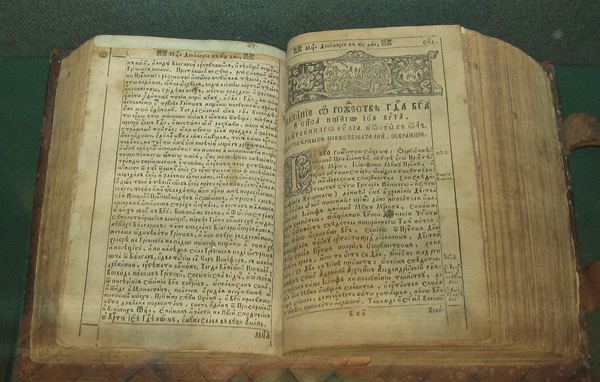 | ||
The Great Menaion Reader (Russian: "Великие Четьи-Минеи", or Velikiye Chet’yi-Minei) is the official Russian Orthodox menologium, i.e., a collection of biblical books with interpretations of exordiums, patericons, translated or original hagiographies of Russian saints, works of church fathers, and Russian ecclesiastical writers.
Each of the twelve volumes corresponds to a certain month (hence, the name chet’yi-minei or monthly readings, from the Greek word menaion) and subdivided into days. Also, the Great Menaion Reader includes the so-called kormchiye knigi (books of guidelines, a.k.a. books of the helmsman), monastic charters, acts, and missives. All of this material is sorted by months.
The Great Menaion Reader was compiled in the 1530s-1540s under the supervision of Metropolitan Macarius of Moscow. The Great Menaion Reader contains over 27,000 large-size pages copied by hand and artistically decorated. Metropolitan Macarius decided to compile the Great Menaion Reader for the purpose of centralizing the cult of the Russian saints and consolidation of ecclesiastic ideology, so no Russian secular literature was included.
Manuscripts
The Great Menaion Reader was revised and expanded by Dimitry of Rostov in the early 18th century. His version is still used by the Russian Orthodox Church.
